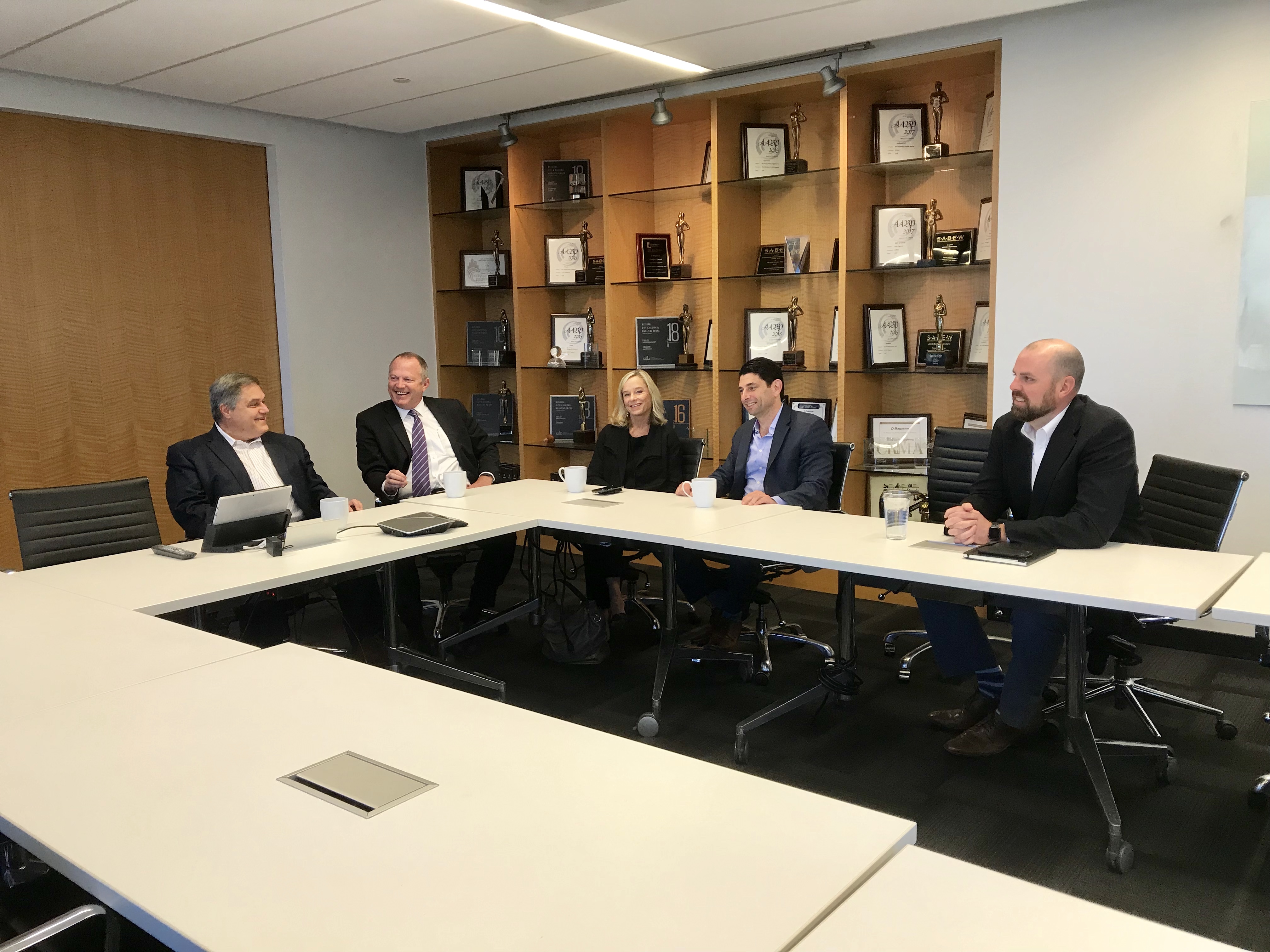I recently sat down for a round table with Younger Partners’ Kathy Permenter, Moody Younger, Greg Grainger, and their new capital markets hires of Scot Farber and Tom Strohbehn in the D Magazine offices. We talked about everything from self-driving cars and their effect on the office market to the capital markets climate.
On self-driving cars and our need for parking:
Tom Strohbehn: “The idea of autonomous fleet of Uber-type vehicles just like a beehive: It’s an amazing thought exercise, and it’s really valuable, but the challenge to it is, think about the team here. I’d ask where does everybody come from? How many people live inside Dallas proper?…If I live in Waxahachie, can I hit a button and a car is there? I definitely think that’s where a lot of transportation in major metropolitan areas is going, but you’re still going to need some pretty healthy component of parking because most companies in Dallas recruit from the metro.”
Greg Grainger: “I think the answer is really directed around what happens in technology. At some point, we are going to have excess parking. The question is when. We are still a commuter city… when you start looking at it ultimately and saying when technology comes around that allows for more effective non-owned transportation, I think you’ll see people questioning whether I need the two-car household, or do I need one car to handle interflow traffic but then I’m calling for a transportation alternative during those times when I’m commuting to town…Ford just came back and said they’ve invested $4 billion so far into autonomous driving vehicles. They’re pushing back their thought though more than 5 years on when they’ll be ready for market. We were hearing early 2000s. Now, you’re probably getting closer to 2030 before truly autonomous vehicles will be operating. And that means that we still have demand for parking, until such time as an alternative comes along.”
Kathy Permenter: I think Texas will be one of the last places to give up their cars…We’re stil seeing lots of deals that are six per thousand…they’re not necessarily referring to parking, it’s more that is going to be the density on the floor…I’ve got a tour next week. It’s six per thousand; we’ve only got four per thousand in parking, and they’re saying, ‘It’s ok. We’re fine with that. We can deal with the four per thousand in the parking. We just want you to know that in the building we’re going to be six per thousand.’ In the majority of instances where people want six per thousand in the lease, they are not using six per thousand in parking.”
Tom Strohbehn: “[Parking] is one of the first two, three, four questions, at whether on the lease side or the sales side: What’s pricing guidance? What’s this? What’s parking?”
Moody Younger: “I think where technology changes it isn’t in self-driving cars…There’s just too much that has to be learned and too much technology that has to be developed. But where technology does help is your data gathered in your garage or in your parking. Let’s say you have three per thousand, usage is usually not even three per thousand in a fully leased office building with normal tenancy because we’ve got so much flow. People are in and out or people are sick, people are on vacation. Some people car pool…I think where technology will help is with the efficiency of parking space utilization before we have self-driving cars.”
On the spate of buildings for sale in downtown:
Scot Farber: “I think it’s interesting that they’ve all come at one time, and I think you have to look at kind of a case-by-case who’s selling and for what reason. Each one of them has their own reasons. It’s a lot of inventory to put on the market at one time…I think that it will work itself out. It’ll be interesting to see if the guys that are putting it on the market are a seller at a price or a seller at market. So, to-be-determined about how much activity and whether all of them actually trade.”
Tom Strohbehn: “The root of the question is: What is the state of the market? I think investor demand for Dallas Texas remains high. Job growth, population growth, all the great metrics that everybody likes to talk about, people want to be in Dallas. The question is, do they want to buy 1.8 million square feet in downtown or do they want to buy 300,000 feet in Las Colinas or do they want to buy 180,000 feet up on Central? I think it’s probably just coincidence that three of them are coming to market at the same time. The first few months of the year have been kind of slow in terms of building availability. There hasn’t been a ton on the market so far this year. So, I think it’s kind of a coincidence. They’re three very, very different ownership profiles–one local, one German, one Canadian–and so they have varying hold periods and they’re driven by different metrics, so I think it’s more of a coincidence than a symptom of the market.”






